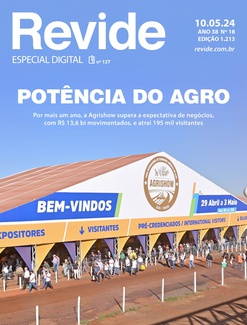
Structural Changes in Chinese Meat Chains
Special to China Daily, by Marcos Fava Neves
The objective of this analysis is to share with China Daily readers a recent workshop that I had the opportunity to coordinate in Shanghai, on 12th of June, during the events to launch my new Chinese book “The World on the Tongue”, by Central Compilation and Translation Press.
In this event, around 15 of the largest pork and poultry producers and processors operating in China stood for around 5 hours debating the future of the industry. Very interesting debate done with nice and enthusiastic people about a brilliant future.
This article summarizes the good news and opportunities, mostly related to the worldwide growth of food markets and also raises the major challenges for the industries operating in the meat markets in China.
First, there are several opportunities open for growth in the Chinese meat markets. Projections show that internal markets in 2030 will be of around 1,5 billion consumers and urbanization will be around 70%, bringing incredible changes in consumption patters.
In the next 20 years, income will grow in an average of 5 to 8%/year, so with this, GDP/capita in China will raise from US$ 5,500 to US$ 15,000 in 2030. The major impact of this fact is that there will be and increase of almost 15 kg in the per-capita consumption of meat by 2030, lifting from 57,3 to almost 70kg per person. It is an incredible development of markets, bringing a lot of opportunities and also challenges.
In order to face this growth and accomplish new macro-environmental changes several challenges were raised by these executives and will be summarized below.
a) Human resources management, both in availability of trained employees and to face the cost increase of labor, due to higher salaries and benefits, estimated in more than 30%;
b) Adaptation to new Governmental regulations toward food security in China will increase production costs even regulations regarding feeding the animals may reduce the amount of products used as feed;
c) Government policies towards improvement of small and medium size companies will also change the industry in the near future, since some of these are low scale and have low productivity;
d) Government policies towards the usage of land in China will challenge the growth of this industry mostly because of the growth of municipalities and Chinese companies will need to expand internationally to secure supply chains;
e) Diseases spreading due to the density of production bringing risks of severe epidemics and frequent outbreaks;
f) Cross regional development of logistics towards inlands of China, where there is also a growing market and production;
g) How to adjust the strategy to this fast growth needed together with promoting sustainability, due to an increase in environmental concerns and media coverage, will be a challenge;
h) The need to innovate is also a challenge. Innovations that increase profitability in the production systems via promoting vigorous scientific and technological projects;
i) Information management, mostly in how to follow the market information and select the most relevant for decision-making;
j) The need to face global competition and opening of markets;
k) Price volatility of grains may increase the need to develop long term procurement strategies;
l) Gradual improvement of institutional environment in China;
m) The need to improve financial support for new investments;
n) Improvement of collective actions, with better chain organization and coordination;
o) Improvement of management capacity to understand and adapt to the new environment.
As seen, the major challenges raised by these executives are tough but comes in a market that is growing, so it is a question of adjustments. The major dilemmas will be to localize or globalize production, to focus or to diversify towards different food business, to promote growth via public or private companies and the capacity to understand and adapt.
As moderator I received a last question about globalization and the future positioning of Brazil in the grain and meat industries. The question if Chinese investments in Brazil to complement the production needed to face the demand would be welcome, and, finally, if it would require buying land abroad. My opinion, shared more than two years ago with China Daily readers is that this is what I called ”the food bridge”, meaning food being produced in Brazil and supplied to China, as the major trade in 2020.
There are plenty of investment opportunities for Chinese grain and meat companies in Brazil and I think the most interesting investments would be in origination (industries for processing with networks of contracted suppliers) and not in land, which requires higher volume of resources and faces restrictions.
There is a lot to come in the near future for Chinese pork and poultry companies and this article summarized the discussions of this workshop.
The author is professor of strategic planning and food chains at the School of Economics and Business, University of Sao Paulo, Brazil (www.favaneves.org) and international speaker. Author of 25 books published in 8 countries. The event was sponsored by Novus International.

